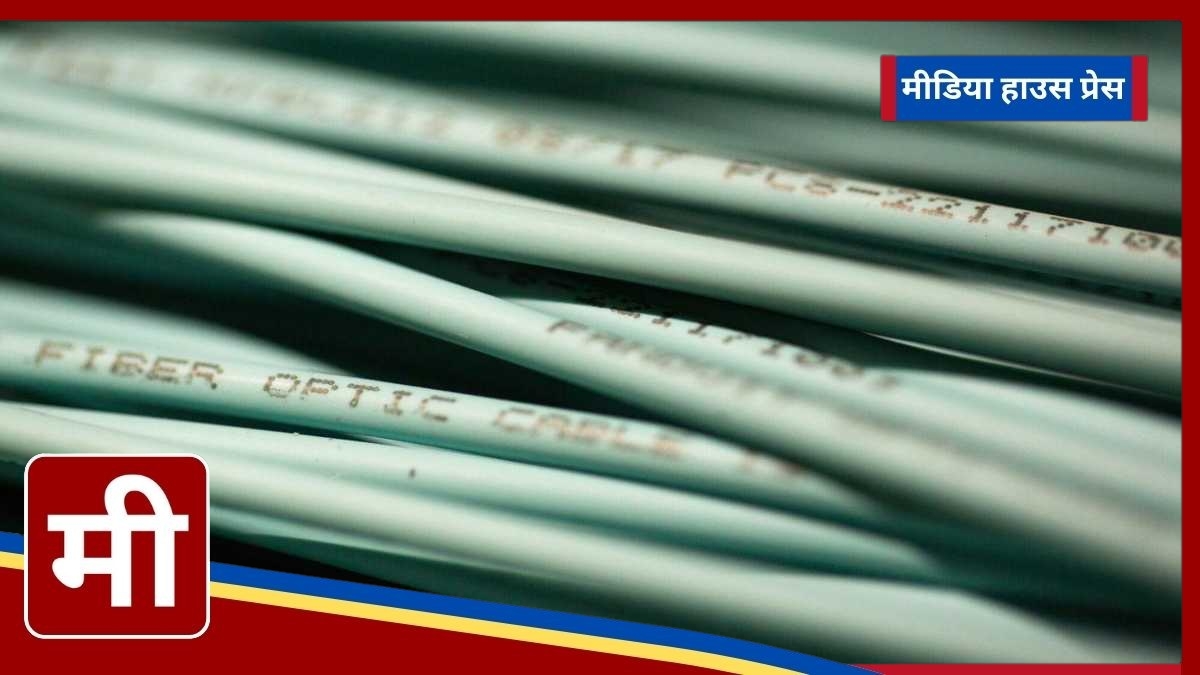BCE Inc. Freezes Dividend Growth as It Expands to the U.S. with $3.6 Billion Ziply Fiber Acquisition

The Deal That Could Reshape BCE’s Future
BCE’s acquisition of Ziply Fiber marks its first major expansion into the U.S. broadband market. Ziply Fiber currently serves 1.3 million locations across Washington, Oregon, Idaho, and Montana. With plans to expand to more than 3 million locations over the next four years, BCE is positioning itself as a player in the highly competitive U.S. fiber-optic market, taking on companies like Comcast and AT&T.
The announcement comes less than two months after BCE sold its stake in Maple Leaf Sports and Entertainment (MLSE) to Rogers Communications Inc. for C$4.7 billion, a move aimed at reducing debt levels. However, BCE has now shifted plans and intends to allocate the majority of that cash—expected at C$4.2 billion—to finance the Ziply Fiber purchase.
Dividend Freeze After 16 Years of Growth
One of the most unexpected elements of BCE’s announcement was its decision to pause dividend growth through 2025. BCE has raised its dividend annually for 16 years, making it a cornerstone of the company’s investment appeal, particularly for income-focused investors. However, BCE is halting this trend to prioritize capital allocation for the Ziply Fiber acquisition and fund future fiber infrastructure growth.
Additionally, BCE plans to issue new equity through its Dividend Reinvestment Plan (DRIP) by offering shares at a discount. This approach allows BCE to raise capital while rewarding existing shareholders who opt to reinvest dividends directly into the company.
Investor Reaction and Stock Performance
Following the announcement, BCE shares dropped 9.7% in Toronto to close at C$40.47, the lowest price since May 2012, marking a more than four-year stock decline. While shareholders were initially unsettled by the dividend freeze, CEO Mirko Bibic emphasized that the acquisition decision was a strategic one aimed at securing BCE’s long-term fiber growth in a high-demand market.
“We’re managing this for the long term,” Bibic explained in an interview, underscoring that the expansion of BCE’s fiber infrastructure aligns with the company’s growth strategy. He also pointed out that analysts had anticipated a dividend pause given the capital intensity of fiber expansion and the MLSE sale’s focus on strengthening BCE’s financial position.
Strategic Timing of the Ziply Fiber Deal
Bibic revealed that discussions with Ziply Fiber’s management, which operates under Searchlight Capital in partnership with three Canadian pension funds, only began in late September—shortly after the MLSE transaction was made public. This swift progression underscores BCE’s focus on taking advantage of high-growth opportunities in the fiber-optic sector.
By acquiring Ziply Fiber, BCE gains access to an established infrastructure network in the Pacific Northwest with significant growth potential, a strategic asset as fiber-optic broadband demand surges in North America.
What’s Next for BCE?
As BCE pushes into the U.S. market, the company is betting that a larger fiber network footprint will enhance its competitive advantage and open up new revenue streams. By pausing its dividend growth and utilizing a DRIP discount, BCE signals a shift toward reinvesting cash into its infrastructure—a move that may pay off in the long run for growth-minded investors looking beyond the traditional telecom dividend model.
BCE’s focus on fiber expansion is an ambitious strategy aimed at driving sustainable growth, despite initial investor unease.
“इस नाटक का अर्थशास्त्र मध्यम से लंबी अवधि में बहुत आकर्षक है,” उन्होंने नॉर्थवेस्ट सेवा क्षेत्र में प्रतिस्पर्धियों की कमी की ओर इशारा करते हुए कहा, जो समान रूप से तेज इंटरनेट गति प्रदान करते हैं और नॉर्थवेस्ट फाइबर के हाल ही में जुड़ने के बाद इसके कई नए संभावित ग्राहक हैं। फाइबर के लिए घरों की एक बड़ी संख्या. “एक बार उन तथ्यों को आत्मसात कर लिया जाए, तो मुझे लगता है कि लेनदेन की एक अलग धारणा होगी।”
बिबिक ने एक कॉन्फ्रेंस कॉल के दौरान विश्लेषकों को बताया कि यूएस फाइबर निवेश के लिए एमएलएसई में अपनी हिस्सेदारी की अदला-बदली करके, बीसीई एक ऐसे व्यवसाय के लिए खेल संपत्ति में अल्पमूल्यांकित अल्पसंख्यक हित का व्यापार कर रहा है जो पूरी तरह से विशेषज्ञता के क्षेत्र में है और नई विकास संभावनाएं खोल सकता है। उन्होंने इस संभावना से इनकार नहीं किया कि कंपनी इस तरह के और लेनदेन करेगी.
‘हैरान करने वाला लेन-देन’
बीसीई, जो बेल के रूप में कारोबार करता है, धीमे वायरलेस बाजार, उच्च पूंजीगत व्यय और उच्च लाभांश के कारण हाल ही में वित्तीय दबाव में रहा है – शेयरों की उपज 9% से अधिक है। कंपनी ने घरों और व्यवसायों को तेज इंटरनेट स्पीड प्रदान करने के लिए कनाडाई शहरों के आसपास अपने फाइबर ऑप्टिक नेटवर्क के निर्माण पर भारी खर्च किया है, जिससे वह रोजर्स और क्यूबेकॉर इंक के वीडियोट्रॉन जैसी केबल कंपनियों के साथ बाजार हिस्सेदारी की लड़ाई में अधिक प्रतिस्पर्धी बन गई है।
जब कंपनी ने सितंबर में एमएलएसई में अपनी 37.5% हिस्सेदारी बेचने की घोषणा की, तो कई विश्लेषकों ने इसे अपने कर्ज के बोझ को कम करने के मार्ग के रूप में देखा। इसके बजाय, बीसीई का कहना है कि उसे उम्मीद है कि उसका शुद्ध ऋण उत्तोलन अनुपात मौजूदा स्तरों से “अपेक्षाकृत अपरिवर्तित” रहेगा।
कुछ विश्लेषकों ने नवीनतम सौदे की आलोचना की। स्कोटिया कैपिटल के विश्लेषक माहेर याघी ने इसे उच्च कीमत पर “हैरान करने वाला लेनदेन” कहा – ब्याज, करों, मूल्यह्रास और परिशोधन से पहले अगले साल की अनुमानित कमाई से 14 गुना से अधिक, जिसमें तालमेल भी शामिल है।
“कनाडाई टेलीकॉम में निवेशक लाभांश के लिए इस क्षेत्र में हैं, न कि विकास पाने के लिए; वे इसे कहीं और प्राप्त कर सकते हैं,” याघी ने लिखा। उन्होंने कहा, नॉर्थवेस्ट फाइबर खरीदने से बीसीई का वर्षों तक मुक्त नकदी प्रवाह कम हो सकता है, “और निकट भविष्य में लाभांश में कोई वृद्धि नहीं होना एक महत्वपूर्ण रणनीतिक परिवर्तन का प्रतिनिधित्व करता है।”
नेशनल बैंक ऑफ कनाडा के विश्लेषक एडम शाइन ने कहा, बाजार को अमेरिका में बीसीई के प्रवेश की खबर को पचाने के लिए समय की आवश्यकता होगी, “ऐसे में, हमें उम्मीद है कि बीसीई के शेयर अगले कई तिमाहियों तक दबाव में रहेंगे।”
बीसीई, जो मॉन्ट्रियल क्षेत्र में स्थित है, नॉर्थवेस्ट फाइबर ऋण का C$2 बिलियन ग्रहण करेगा।
कंपनी ने कहा कि इस सौदे के साथ, वह 2028 तक उत्तरी अमेरिका में 12 मिलियन से अधिक स्थानों पर अपने फाइबर नेटवर्क का विस्तार करने के लिए तैयार है।
–स्टेफ़नी ह्यूजेस और डेविड स्कैनलान की सहायता से।
(पहले पैराग्राफ से शुरू होने वाली शेयर प्रतिक्रिया के साथ अपडेट।)
ब्लूमबर्ग बिजनेसवीक से सर्वाधिक पढ़ा गया
©2024 ब्लूमबर्ग एल.पी



